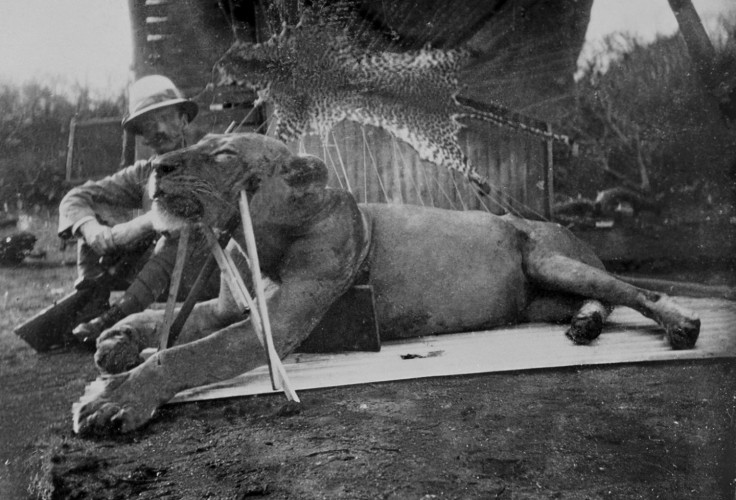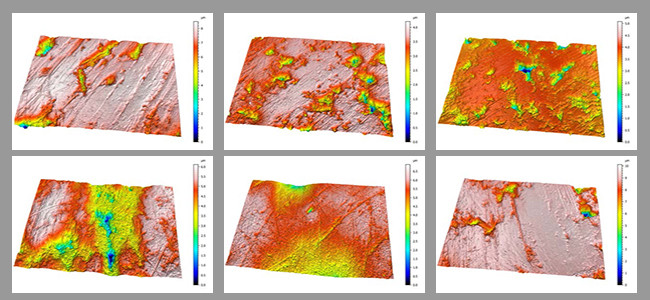Dental disease led legendary man-eating lions of Tsavo to kill humans
Dental injuries would have made catching other prey much more difficult.
The legendary man-eating lions of Tsavo may have resorted to eating humans because they suffered from dental disease which prevented them from catching other prey.
From March to December 1898, in the vast Kenyan savanna around the Tsavo River, a pair of lions terrorised and killed a number of construction workers building the Kenya-Uganda Railway.
The attacks ended when the two man-eaters were shot down by Lieutenant Colonel John Patterson, who had been hired by the British East Africa Company to supervise the construction of the railway bridge.
Patterson later gained international recognition when he published his book, "The Man-Eaters of Tsavo", to tell the story of the tragic events. The two specimens he killed can now be seen in the Field Museum in Chicago.
Despite such horrific accounts of lions preying on people, it is worth noting that lion attacks are quite rare. Thus, scientists have long been puzzled by the behaviours of the two man-eating lions of Tsavo and have attempted to find out why they started killing so many people in such a short space of time.
In a study now published in the journal Scientific Reports, researchers from Vanderbilt University and the Field Museum have investigated the animals' motivations for eating humans.
The story in their teeth
A popular hypothesis among scientists who have studied this issue suggests that the Tsavo man-eaters turned to human prey because they couldn't find anything else to eat. The region had indeed been hit hard by droughts and part of the wildlife was being decimated by epidemics, reducing the number of available prey that lions could catch. In times of food scarcity, these large carnivores might have resorted to eating humans.

"It's hard to fathom the motivations of animals that lived over a hundred years ago, but scientific specimens allow us to do just that. Since The Field Museum preserves these lions' remains, we can study them using techniques that would have been unimaginable a hundred years ago," says Bruce Patterson, co-author of the study and MacArthur Curator of Mammals at The Field Museum (with the same last name but no relation to the colonel who killed the two lions).
The team conducted a microwear analysis on the teeth of three man-eating lions from the Field Museum's collection, including the two Tsavo lions and a lion from Mfuwe, Zambia which is also known to have eaten at least six people in 1991. Such an analysis can provide valuable information about the nature of animal's diet in a short time period prior to its death.
Their theory was that if prey shortage had really been a problem for the man-eating lions, they would have resorted to scavenging and eating bones. The animals would thus have a dental microwear similar to hyenas, which routinely chew and digest the bones of their prey.
"Despite contemporary reports of the sound of the lion's crunching on the bones of their victims at the edge of the camp, the Tsavo lion's teeth do not show wear patterns consistent with eating bones," said lead author Larisa DeSantis. "In fact, the wear patterns on their teeth are strikingly similar to those of zoo lions that are typically provisioned with soft foods like beef and horsemeat."
One of the Tsavo lions had eaten much more people than the other, as chemical analyses of its bones and fur had previously suggested. Here, the scientists discovered that this same lion had severe dental disease. It had a root-tip abscess in one of its canines, a painful infection that would have made normal hunting impossible.

"Lions normally use their jaws to grab prey like zebras and wildebeests and suffocate them," explained Patterson. "This lion would have been challenged to subdue and kill large, struggling prey, and humans are so much easier to catch."
The other Tsavo lion, which had eaten fewer humans, appeared to have less pronounced injuries to its teeth and jaw.
These findings suggest that prey shortage may not have been the only reason why these lions resorted to eating humans. Dental disease appears to be an important factor explaining this kind of behaviours. The fact that the third man-eating specimen studied here, the Mfuwe lion, also presented severe structural damage to its jaw backed up this idea that dental problems may play an important role in triggering man-eating behaviour.
"Man-eating was likely a viable alternative to hunting and/or scavenging ungulates due to dental disease and/or limited prey availability", the authors concluded.
© Copyright IBTimes 2025. All rights reserved.






















